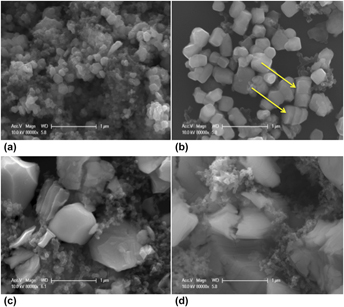Crossref Citations
This article has been cited by the following publications. This list is generated based on data provided by
Crossref.
Yang, Liu
Chen, Jinwei
Chen, Lulu
Yang, Ping
Zhang, Jie
Li, Anqi
Wang, Yu
Wang, Yichun
and
Wang, Ruilin
2016.
LiFePO4 nanoplates with {010} exposed active planes prepared by hydrothermal method.
Journal of Materials Science: Materials in Electronics,
Vol. 27,
Issue. 11,
p.
12258.
Gent, William E.
Li, Yiyang
Ahn, Sungjin
Lim, Jongwoo
Liu, Yijin
Wise, Anna M.
Gopal, Chirranjeevi Balaji
Mueller, David N.
Davis, Ryan
Weker, Johanna Nelson
Park, Jin‐Hwan
Doo, Seok‐Kwang
and
Chueh, William C.
2016.
Persistent State‐of‐Charge Heterogeneity in Relaxed, Partially Charged Li1−xNi1/3Co1/3Mn1/3O2 Secondary Particles.
Advanced Materials,
Vol. 28,
Issue. 31,
p.
6631.
MITANI, Saki
and
KYONO, Atsushi
2017.
Carbon substitution for oxygen in α–cristobalite.
Journal of Mineralogical and Petrological Sciences,
Vol. 112,
Issue. 1,
p.
52.
Cui, Hongfu
Yin, Chong
Xia, Yonggao
Wei, Chenggang
Jiang, Wei
Sun, Jie
Qiu, Bao
Zhu, Mingyuan
and
Liu, Zhaoping
2019.
Synergy effects on blending Li-rich and classical layered cathode oxides with improved electrochemical performance.
Ceramics International,
Vol. 45,
Issue. 12,
p.
15097.
Zehetmaier, Peter M.
Zoller, Florian
Beetz, Michael
Plaß, Maximilian A.
Häringer, Sebastian
Böller, Bernhard
Döblinger, Markus
Bein, Thomas
and
Fattakhova‐Rohlfing, Dina
2020.
Nanocellulose‐Mediated Transition of Lithium‐Rich Pseudo‐Quaternary Metal Oxide Nanoparticles into Lithium Nickel Cobalt Manganese Oxide (NCM) Nanostructures.
ChemNanoMat,
Vol. 6,
Issue. 4,
p.
618.
Lopez, Daniel Andres Sanchez
Chagas, Luciana Gomes
Batista, Aline Domingues
Guaita, Maria Gabriella Detone
Amorin, Luís Henrique Cardozo
da Silva, Paulo Rogério Catarini
Yamanishi, Gustavo
Zaia, Dimas Augusto Morozin
de Santana, Henrique
and
Urbano, Alexandre
2021.
Effect of RF magnetron sputtering parameters on the optimization of the discharge capacity of ternary lithium oxide thin films.
Journal of Materials Science: Materials in Electronics,
Vol. 32,
Issue. 13,
p.
17462.
Chowdhury, Ridwanur
Banerjee, Aayan
Zhao, Yan
Liu, Xinhua
and
Brandon, Nigel
2021.
Simulation of bi-layer cathode materials with experimentally validated parameters to improve ion diffusion and discharge capacity.
Sustainable Energy & Fuels,
Vol. 5,
Issue. 4,
p.
1103.
Hakam, Miftakhul
Arinawati, Meidiana
Chairinnisa, Afifah Nur
Adristy, Rheina Jelita
Yudha, Cornelius Satria
and
Purwanto, Agus
2023.
Synthesis of Li-Ion Battery Cathode Material: Conversion of Cheap Mixed Hydroxide Precipitate to High Performance LiNi<sub>0.5</sub>Mn<sub>0.3</sub>Co<sub>0.2</sub>O<sub>2</sub>.
Materials Science Forum,
Vol. 1111,
Issue. ,
p.
23.
Tan, Lei
Li, Zhao
Tong, Zhengwang
Wang, Zhiguo
Li, Yan
Wang, Lei
Shang, Yu
Bi, Jiaying
and
Lei, Shubin
2024.
Research progress on lithium-rich manganese-based lithium-ion batteries cathodes.
Ceramics International,
Vol. 50,
Issue. 4,
p.
5877.





